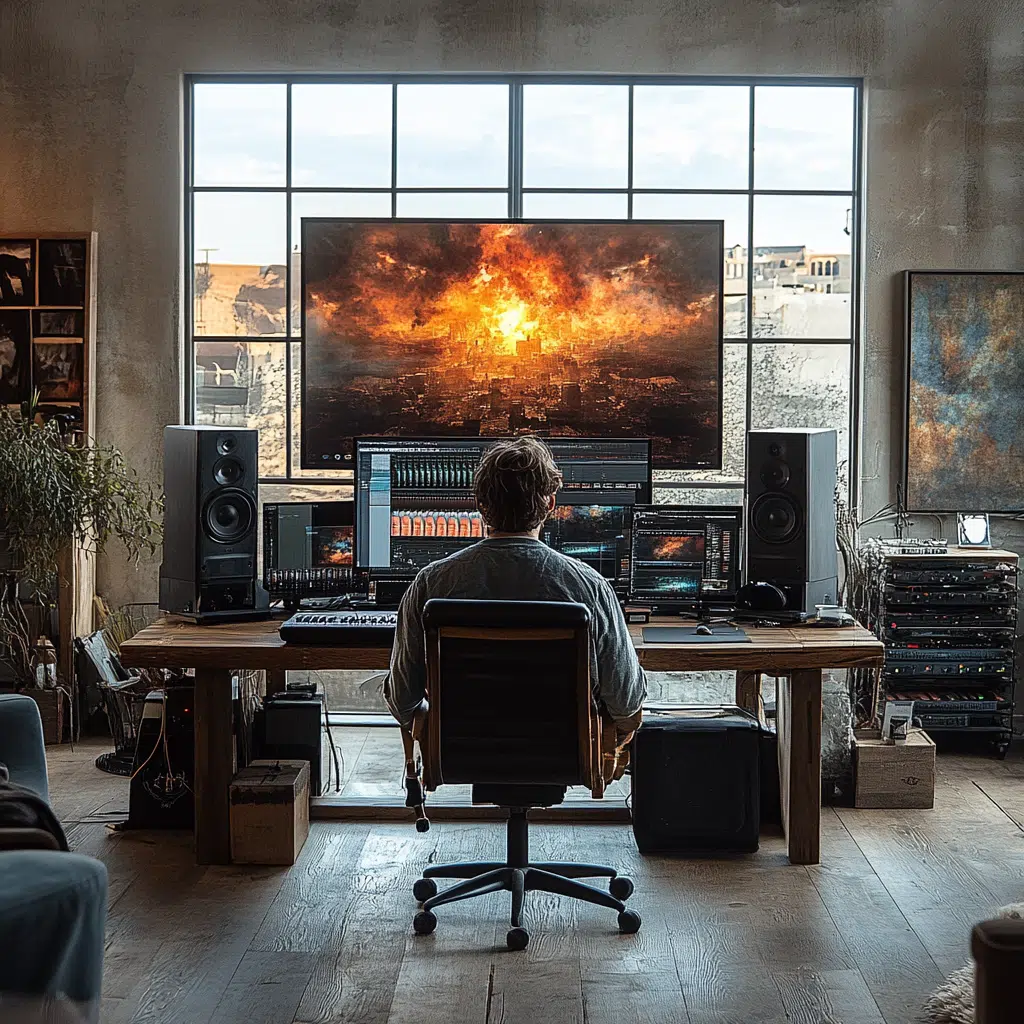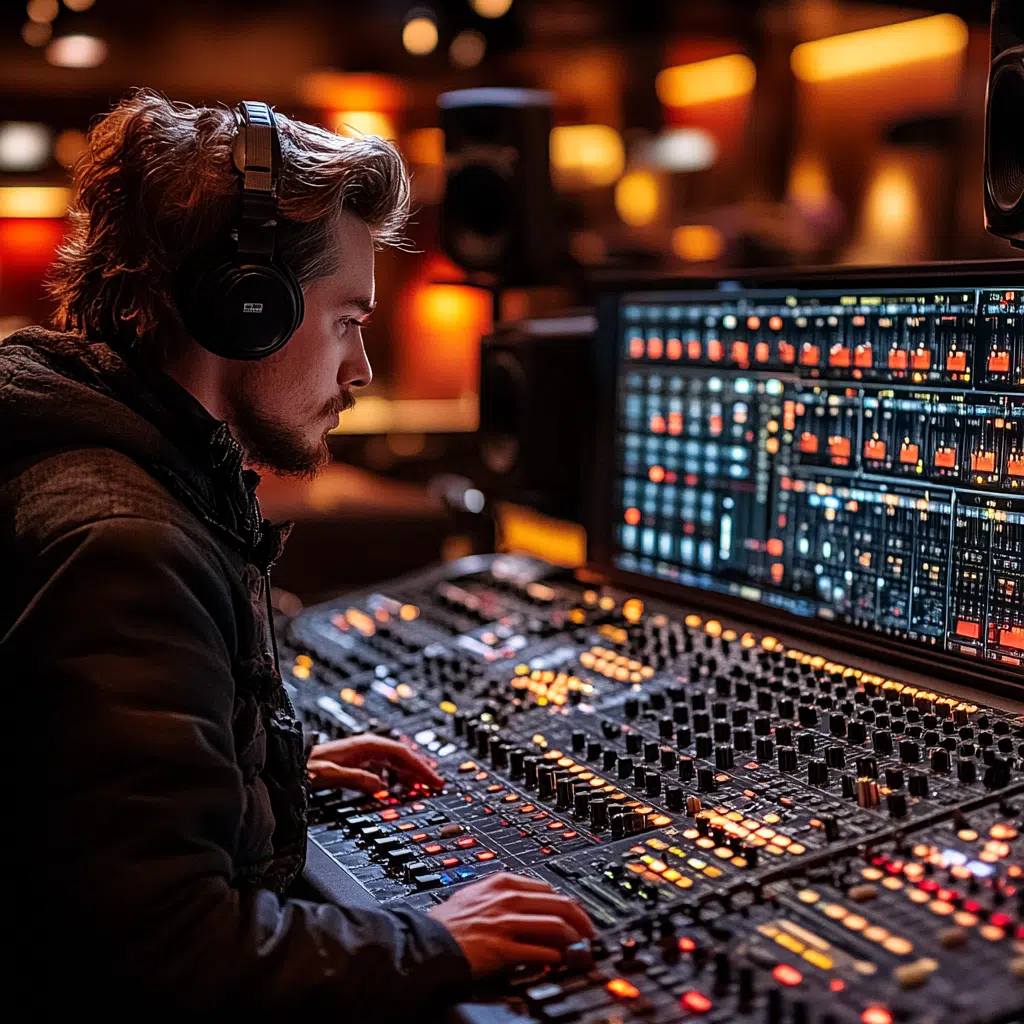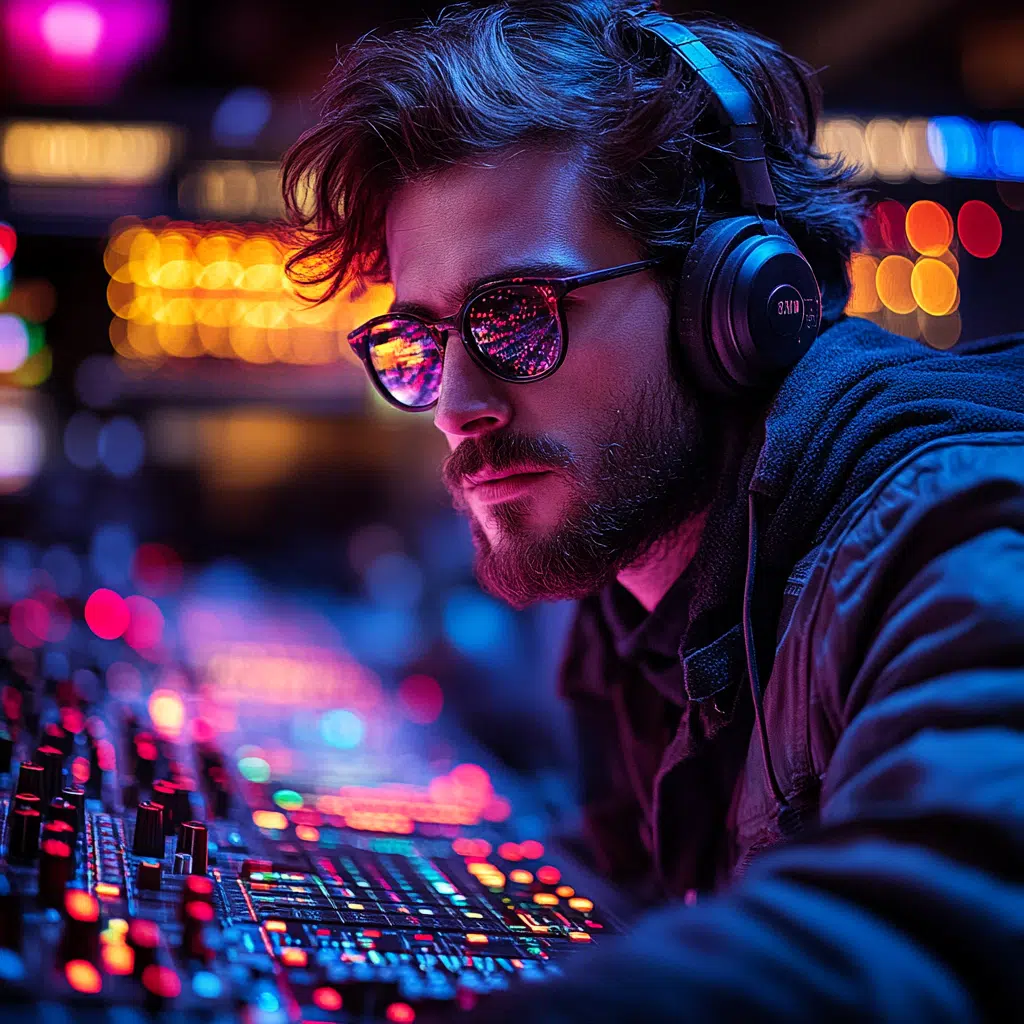The world of sound design is evolving, and Dolby Atmos Audio Post Production is leading the charge. This groundbreaking technology redefines how we experience audio in film, television, and multimedia. By creating a three-dimensional auditory landscape, Dolby Atmos allows sound designers and composers the freedom and precision to move audio elements around the listener. This article will explore the evolution of Dolby Atmos, top ways it elevates sound design, and the technical expertise required to harness its potential. It will also dive into successful implementations and future trends, inspiring filmmakers and producers to embrace this revolutionary audio format.
The Evolution of Dolby Atmos Audio Post Production
Dolby Atmos emerged out of a desire for a richer, more immersive listening experience. Since its inception, it’s transformed how we perceive sound in cinema and beyond. The introduction of height channels, which facilitate sound placement above the listener, has expanded sound designers’ capabilities beyond traditional surround sound formats. Imagine listening to a film where sound seems to swirl around you, making the experience decidedly more engaging.
As new advancements continue to roll out, like Dolby Atmos Music, the technology is pushing audio production even further. Dolby Atmos Music allows artists to create soundscapes that envelop listeners, making them feel like they’re not just passive observers but active participants in the experience. It can transform a simple song into a dynamic audio journey.
In cinematic storytelling, Dolby Atmos Audio Post Production proves indispensable. Films leverage this technology to create multi-layered soundscapes that support the narrative. The ability to move sounds intricately around the viewer adds emotional weight, making every gasp, explosion, or whisper resonate more deeply.
Top 5 Ways Dolby Atmos Audio Post Production Elevates Sound Design
Renowned composers like Hans Zimmer utilize Dolby Atmos to create sound that’s integral to the storytelling itself. In Dunkirk, the sound design places the viewer at the center of immersive battle scenes. Through this spatial audio design, the audience feels the anxiety and intensity of wartime, connecting them emotionally to the narrative.
In the realm of video games, Ghost of Tsushima exemplifies how Dolby Atmos changes the sound experience. Sounds dynamically shift based on player interactions, propelling realism. This ensures players are not just witnesses but participants in an unfolding story, solidifying the immersive quality of gameplay.
Dolby Atmos helps to enhance dialogue clarity, essential for the viewer’s understanding. A great example is The Mandalorian, where the technology ensures that dialogue remains crisp and clear, no matter the playback system. This is crucial for maintaining dramatic tension and engagement throughout the series.
The technology grants sound designers a platform to experiment and innovate. A Quiet Place Part II employed Dolby Atmos to fuse ambient noise with the score. By manipulating sound dynamically, they established a palpable sense of dread and anticipation, perfectly aligning with the onscreen tension.
Dolby Atmos is not limited to theaters; its versatility allows for seamless integration across various platforms. Films like Bird Box used Atmos in post-production to craft an audio experience that keeps viewers on the edge of their seats, regardless of their listening environment. This compatibility ensures that filmmakers can retain their artistic vision no matter where audiences consume their work.
The Technical Expertise Behind Dolby Atmos Audio Post Production
To truly optimize Dolby Atmos Audio Post Production, understanding the technical details is paramount. The workflow typically involves tools such as Digital Audio Workstations (DAWs) like Pro Tools, where sound designers can create a multi-dimensional sound experience. Through specialized plugins and monitoring systems, they can effectively position sounds in three-dimensional space.
In post-production, mixing is where the art meets science. A well-balanced mix enhances the emotional impact of a scene, making the careful manipulation of levels vital. It’s more than just adjusting volume levels; it’s about evoking feelings and guiding audience attention.
Moreover, the aspect of original music composition in Dolby Atmos cannot be overstated. Composers need to think beyond traditional methods, envisioning how their scores will interact with spatial audio. This fusion leads to a meticulous, profound emotional connection between the audience and the story being told.
Case Studies: Successful Implementations of Dolby Atmos Audio Post Production
The impact of Dolby Atmos Audio Post Production is best illustrated through successful implementations in notable films.
The Future of Dolby Atmos Audio Post Production
Looking forward, the potential of Dolby Atmos Audio Post Production remains bright. As technology takes leaps forward, innovations like AI-driven sound mixing and interactive audio experiences are on the horizon. This could allow for even greater storytelling possibilities, where sounds adapt fluidly to the audience’s reactions.
In addition, the democratization of these tools means that independent filmmakers can access high-quality audio production without needing a Hollywood budget. Consequently, sound design is becoming more integral to storytelling, enabling a vast array of creators to push the boundaries of their craft.
As consumer technology evolves, Dolby Atmos remains at the forefront. Accessibility means that immersive audio can be experienced by anyone, not solely those with a high-end system. This engagement will shape the future of music and sound in an incredibly exciting way.
Elevating the Art of Storytelling Through Sound Design
Dolby Atmos audio post production is not just changing sound—it’s redefining storytelling itself. As filmmakers embrace this technology, they’re crafting experiences that resonate long after the credits roll. The future of cinema and multimedia lies in merging sound with narrative, captivating audiences more deeply than ever before.
Sound design is evolving from being a mere backdrop to becoming a driving force in crafting immersive experiences. The films that employ Dolby Atmos Audio Post Production illustrate this beautifully, inviting viewers into a world where they can not only hear but also feel the story unfold. Through the advancement of technology and artistry, we stand on the brink of an audio revolution that’s here to stay.
Dolby Atmos Audio Post Production: Fun Trivia and Interesting Facts
The Sound Revolution
Did you know that Dolby Atmos Audio Post Production isn’t just for films? Streaming services have jumped on the bandwagon, revolutionizing how we consume media from the comfort of our couches. With an immersive sound experience, filmmakers can now envelop viewers in a world of sound that feels incredibly real. This dynamic mixing process can elevate everything from big-budget blockbusters to indie projects. For those curious about how this works, you can check out this guide on Dolby Atmos mixing For Streaming services. It’s fascinating to see how technology meets creativity in this field!
Remote Mixing Magic
As remote work has become commonplace, the audio post-production industry has found its groove with Remote Dialogue mixing Services. This shift means audio pros can work from anywhere—be it their home studios or while chilling in a cozy spot, like wearing a comfortable Naruto Hoodie. This has made it easier for talent and technicians to collaborate without geographical boundaries. Imagine directing a scene from your favorite café, as dialogue magically comes together, all thanks to Dolby Atmos technology!
Financial Trends with a Twist
Here’s something a bit off the beaten path—did you know that Dolby Atmos’s rise has coincided with evolving financial landscapes? As performers and production teams look for ways to finance their projects, they often weigh out options like the loan mortgage rate in their local market, especially in bustling areas like Orange County. Meanwhile, savvy film studios are investing in innovative sound design to stay ahead of the curve. Tapping into stellar sound can be the cherry on top when competing in today’s market, whether for a star-studded feature or a deep dive into niche projects, such as those featuring a succubus And hitman.
Isn’t it wild how interconnected everything is? Dolby Atmos Audio Post Production journeys through the intersection of artistry and technology, crafting auditory experiences that resonate long after the credits roll. So the next time you’re engrossed in a film or show, take a moment to appreciate how sound shapes your experience—because, ultimately, it’s all about the sound!
What is Atmos in post production?
Atmos in post-production allows sound designers to place and move sounds in a three-dimensional space, creating a more immersive and precise audio experience for films and TV shows. This gives creators a lot more freedom to craft their mixes than traditional stereo or surround sound.
Is Dolby Atmos good for music production?
Dolby Atmos is fantastic for music production as it creates a fully immersive soundstage that makes listeners feel like they’re right there inside the music. It gives artists greater control over how each sound is positioned and moved, resulting in a richer listening experience.
How do I distribute Dolby Atmos music?
To distribute Dolby Atmos music, you need to use Transporter for delivery. If you aren’t a Transporter user, you’ll have to collaborate with a distributor or encoding house after hitting the necessary delivery requirements. It’s also a good idea to include both stereo and Dolby Atmos versions in your releases.
Is Dolby Atmos music the future?
Many folks believe Dolby Atmos music is the future since it offers an incredible, immersive audio experience accessible to everyone. With the ongoing advancements in binaural technology, you don’t need fancy speaker setups to enjoy high-quality sound anymore.
What is the difference between Dolby Atmos and Dolby audio?
The main difference between Dolby Atmos and Dolby audio is that Atmos allows for object-based sound placement in a three-dimensional space, while traditional Dolby audio typically uses channels. This lets Atmos create a more spatial and dynamic listening experience.
Does Dolby Atmos sound better?
Dolby Atmos often sounds better because it provides a more nuanced audio experience with sounds appearing to come from different directions, creating depth and realism in the mix. It’s designed to elevate how we experience sound.
What is the disadvantage of Dolby Atmos?
One disadvantage of Dolby Atmos is that it can require specialized equipment or software for proper playback, which might not be accessible for everyone. Additionally, not all music or audio content benefits equally from the format, so it may not always live up to the hype.
Why do some songs sound bad on Dolby Atmos?
Some songs might sound bad in Dolby Atmos if they weren’t mixed or mastered properly for the format. If the original recording doesn’t take advantage of the spatial features, it can lead to a less-than-stellar listening experience.
Which is better Dolby Atmos or spatial audio?
There’s no straightforward answer to whether Dolby Atmos is better than spatial audio since it often comes down to personal preference and the specific application. Both create immersive sound experiences, but they can differ in how they’re delivered and experienced.
Can I upload Dolby Atmos in DistroKid?
You can upload Dolby Atmos files to DistroKid as long as you follow the platform’s delivery guidelines. Always check their latest requirements to ensure smooth uploading of your audio.
Can I use Dolby Atmos for music?
Yes, you can absolutely use Dolby Atmos for music, as it’s specifically designed to enhance the listening experience by providing a more immersive sound environment that draws the audience in.
How do I know if a song is playing in Dolby Atmos?
To know if a song is playing in Dolby Atmos, look for the Dolby Atmos logo on streaming platforms or check the settings in your playback device. Some apps also highlight tracks that feature Atmos support.
Is Spotify going to support Dolby Atmos?
Spotify is expected to support Dolby Atmos in the future, but they haven’t announced a specific timeline yet. Keep an eye out for updates, as they’re working on enhancing audio experiences.
Did Netflix stop Dolby Atmos?
No, Netflix has not stopped supporting Dolby Atmos; it continues to offer access to this immersive audio format for applicable titles, letting viewers enjoy a heightened sound experience while watching.
Is Dolby Atmos lifetime?
Whether Dolby Atmos is a lifetime feature will depend on the evolution of audio technology and consumer demand. It remains an essential part of modern audio production and may continue to adapt and grow.
What does Atmos mean?
Atmos refers to the immersive audio technology that allows sounds to be placed and moved in a three-dimensional space, enhancing the listening experience in movies, music, and other media formats.
How do you explain the Atmos?
You can explain Atmos as a new way to experience sound where it surrounds you, making it feel like the audio is happening all around you rather than just in front. It’s all about creating a more engaging experience.
What is the explanation of Atmos?
The explanation of Atmos boils down to its ability to create an audio environment that mimics real life by using height and space for sound. This innovative technology moves beyond traditional stereo sound to give listeners a fuller, richer experience.
What is Atmos on a movie?
In a movie, Atmos creates a multi-dimensional sound experience, immersing the audience in the story. Sounds can move in all directions, making scenes feel more real and engaging, enhancing the overall cinematic experience.



